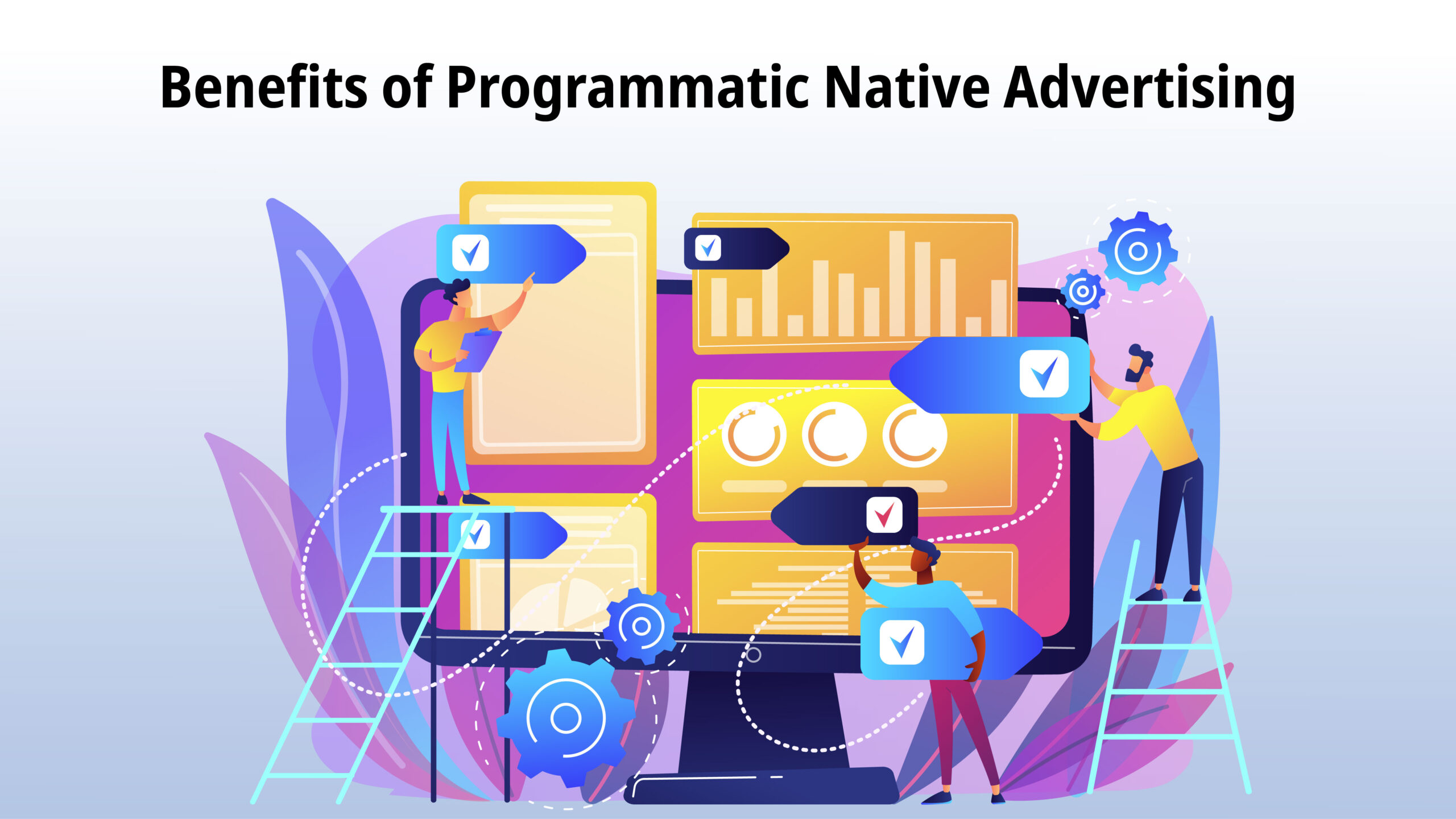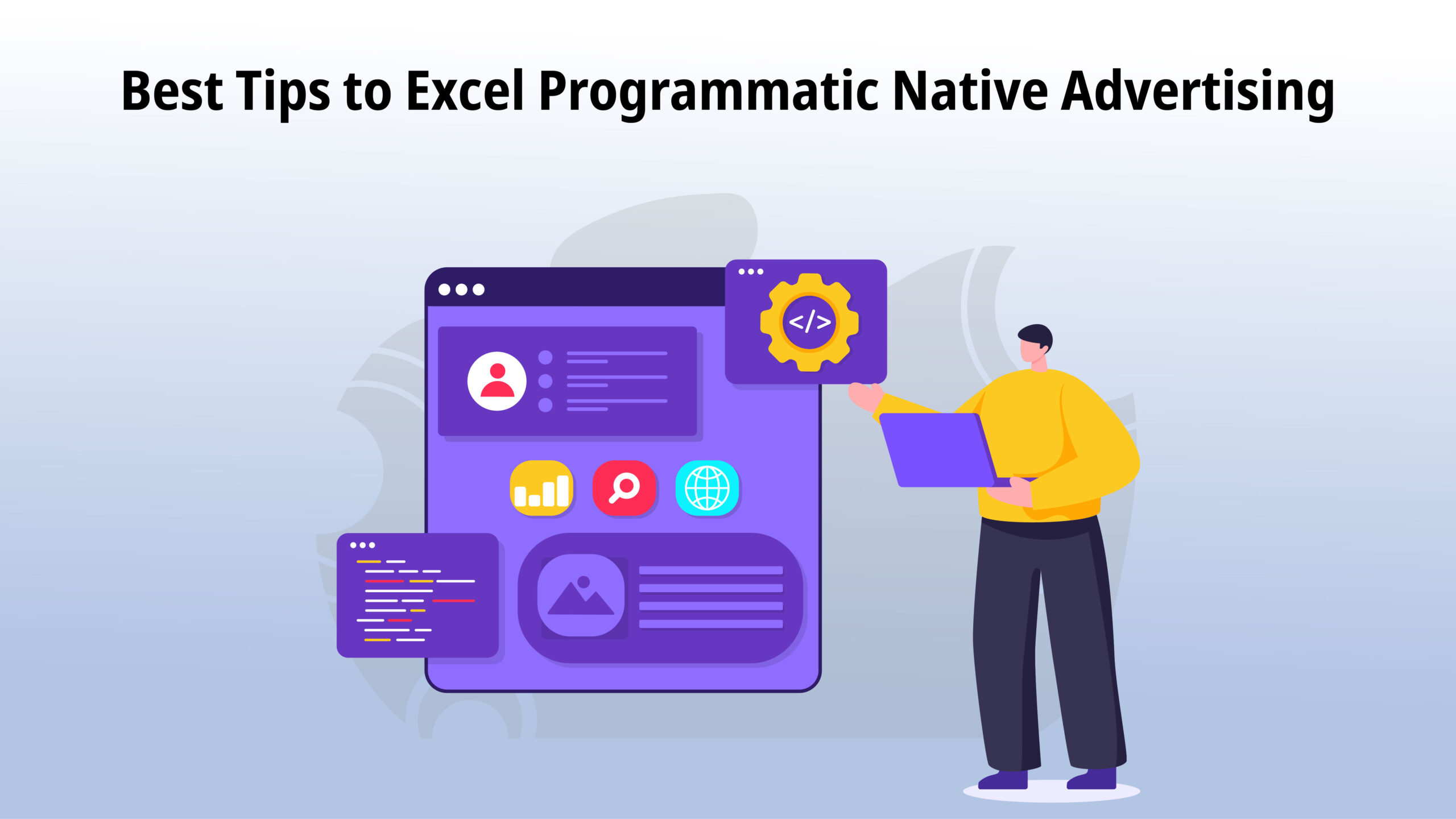It is annoying to see online ads messing with your browsing experience, right? Here’s where the programmatic native advertising comes into play.
Digital marketers are investing a big chunk of their ad budget for this because it’s all about promoting content without being a total buzzkill. People prefer native ads a whopping 53% more often than regular display ads.
In this article, we’ll dive into what programmatic native ads are, how they can amp up your business, and spill the beans on some top-notch tips for rocking programmatic native advertising.
What is Programmatic Native Advertising?
Programmatic native advertising is an automated method of purchasing and selling digital advertising space. It facilitates the connection between advertisers and publishers, enabling the delivery of targeted ads to the appropriate individuals in the most opportune moments and locations. This approach ensures that the advertisements seamlessly integrate with the surrounding content, appearing organic rather than distinctly promotional.
Native programmatic ads enable the seamless targeting of audiences across various channels. These ads are specifically tailored to match the interests and preferences of website visitors, prompting them to willingly engage by clicking on the ads and taking desired actions.
Benefits of Programmatic Native Advertising
 Native advertising combined with programmatic technology allows for precise targeting, ensuring that the appropriate advertisement reaches its intended audience. Let’s summarize the advantages of native programmatic advertising:
Native advertising combined with programmatic technology allows for precise targeting, ensuring that the appropriate advertisement reaches its intended audience. Let’s summarize the advantages of native programmatic advertising:
- Streamlined buying process: Programmatic native ads harness the power of automation, enabling advertisers to prioritize strategic planning instead of traditional metrics like RFQs and RFIs. This approach empowers advertisers to optimize their overall marketing strategies, enabling greater efficiency and effectiveness.
- Cost-effectiveness: Programmatic native advertising comes with an upfront cost, but its potential for a significant return on investment is undeniable. With programmatic native ads, CPMs ((cost per mille)) can be dynamically adjusted in real-time, based on the impression value.
- Enhanced customer insights: Programmatic native ads offer a reliable method of effectively targeting the ideal customer by utilizing device-specific data, search keywords, geography, and other relevant information. This holistic approach ensures that advertising campaigns are precisely tailored to meet the unique needs of each customer.
Also Read: Unlocking Potential of SAP CRM Strategies for Success
Programmatic vs Native Advertising: What’s the Difference?
Programmatic advertising refers to the purchase of ad placements using online software. It involves automated exchanges that allow for real-time ad purchasing across various networks and exchanges. Conversely, native advertising is a modern approach to digital advertising that strives to seamlessly blend with the surrounding content, avoiding the appearance of an obvious advertisement.
Programmatic advertising maintains the conventional appearance of digital advertisements, whereas native advertising aims to avoid any resemblance to an advertisement whatsoever.
Native advertisements are distinct from traditional banner display advertisements. When formulating a programmatic advertising plan, there are three alternatives for advertising formats: display, video, and audio. The classification of display advertisements encompasses regular image advertisements, HTML5 advertisements, and native advertisements.
Through the utilization of machine learning and contextual cues, programmatic buying enables advertisers to enhance the relevance of native ads. This technique allows for the customization of programmatic native ads to suit both the user and the specific platform, leading to improved advertising outcomes in terms of performance.
Key Differences
Appearance: Programmatic advertising emulates the conventional appearance and essence of digital advertisements, whereas native advertising strives to seamlessly integrate with the context in which it is presented, avoiding any resemblance to an advertisement.
Automation: Programmatic advertising entails the automated process of purchasing ads in real time on various networks and exchanges. On the other hand, native advertising is a recently developed approach to digital advertising that strives to appear as non-promotional content.
Relevance: Programmatic buying enables advertisers to enhance the relevance of native ads by utilizing machine learning and contextual cues, leading to improved performance for advertisers.
Programmatic Native Advertising: Is it the Better Choice Over Banner Advertising?
Yes. Programmatic native advertising proves to be significantly more impactful compared to banner advertising. It’s important to note that for this particular comparison, the focus lies on native ads versus banners, rather than the inclusion of programmatic advertising. A study conducted by IPG Media Labs reveals that users exhibit a 52% higher engagement rate with native ads when compared to banners, resulting in an impressive 85% to 93% increase in click-through rates for native ads.
Indeed, banner advertisements are currently more cost-effective and prevalent, despite the persistent issues of ad blockers and banner blindness. Nevertheless, by merging the advantages of native advertising with automated placement, there is a substantial increase in possibilities and scalability. Consequently, programmatic native ads enhance user experience, ensuring greater relevance of ads to the intended audience, as well as delivering more accurate targeting and retargeting capabilities.
Best Tips to Excel Programmatic Native Advertising
 To effectively utilize programmatic native advertising, it is crucial to have a thorough understanding of its proper implementation. By following these straightforward recommendations, you can maximize the advantages of this advertising format and generate innovative native ads.
To effectively utilize programmatic native advertising, it is crucial to have a thorough understanding of its proper implementation. By following these straightforward recommendations, you can maximize the advantages of this advertising format and generate innovative native ads.
To begin with, precise targeting is crucial. To avoid wasting money on displaying ads to irrelevant and uninterested users, it’s essential to grasp the age, location, interests, and gender of your target audience.
Additionally, compelling content is a necessity. The definition of what is considered attractive content varies across different demographics. While some may enjoy vibrant videos filled with action and humor, others may prefer informative articles accompanied by statistics and infographics. Understanding your audience’s preferences is key to delivering the right type, look, and feel of content.
Lastly, selecting the appropriate platform is essential. Determine where your target audience spends their time—whether it’s on Instagram, Twitter, Facebook, TikTok, news portals, or specific websites. Tailor your native advertising specifically for these chosen channels.
Final Thoughts
Programmatic native advertising stands at the forefront of digital marketing, seamlessly blending into the user experience while leveraging data-driven insights for optimal targeting. As brands continue to seek effective ways to engage audiences authentically, the automated and dynamic nature of this type of advertising proves to be a powerful tool, driving enhanced relevance and performance in the ever-evolving landscape of online advertising.


Comments are closed.